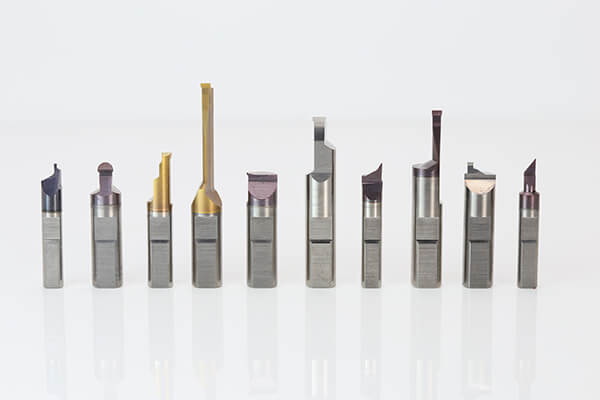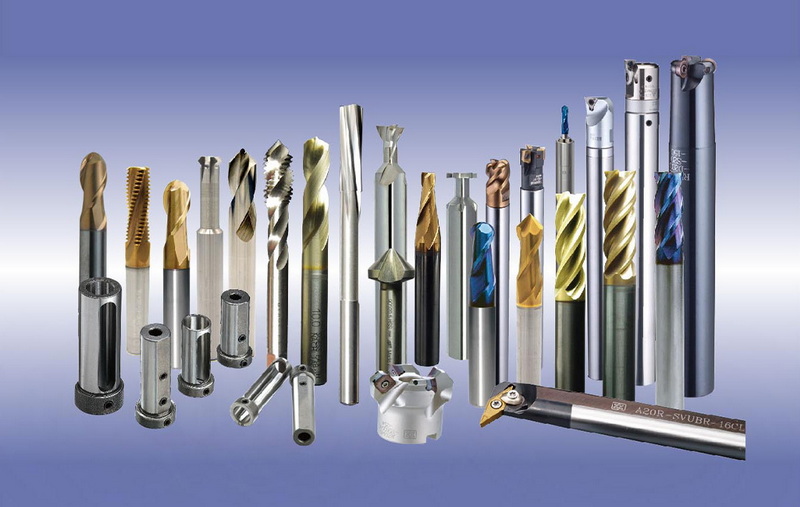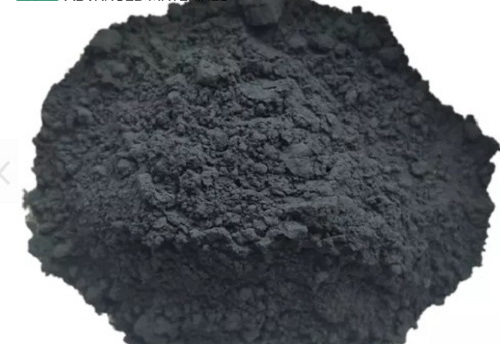Content Menu
● Introduction to Cemented Carbide Products with Cobalt
>> Composition and Properties
● Applications of Cemented Carbide Products with Cobalt
>> 1. Cutting Tools
>> 2. Mining and Construction
>> 3. Wear Parts
>> 4. Aerospace and Defense
● Types of Cemented Carbide Products with Cobalt
>> 1. Tungsten-Cobalt Cemented Carbides
>> 2. Tungsten-Titanium-Cobalt Cemented Carbides
>> 3. Tungsten-Titanium-Tantalum (Niobium) Cemented Carbides
● Customization of Cemented Carbide Products with Cobalt
● Sustainability in Cemented Carbide Manufacturing
>> Recycling and Waste Reduction
>> Alternative Binders
● Future Trends in Cemented Carbide Technology
>> 1. Advanced Materials and Composites
>> 2. 3D Printing and Additive Manufacturing
>> 3. Sustainable Production Methods
● Comparison with Other Materials
● Case Studies of Cemented Carbide Applications
>> 1. Mining Industry
>> 2. Aerospace
>> 3. Automotive
● Challenges and Future Directions
● Conclusion
● Frequently Asked Questions
>> 1. What are the primary components of cemented carbide products with cobalt?
>> 2. How does the cobalt content affect the properties of cemented carbide?
>> 3. What are the common applications of cemented carbide products with cobalt?
>> 4. Can cemented carbide products with cobalt be customized for specific applications?
>> 5. What are some challenges associated with using cemented carbide products with cobalt?
● Citations:
Cemented carbide products with cobalt have become indispensable in various industrial applications due to their exceptional hardness, wear resistance, and toughness. These materials are composed of tungsten carbide (WC) or other refractory carbides bonded together by cobalt, which acts as a metallic binder. The combination of these elements results in a material that is highly versatile and suitable for demanding environments.

Introduction to Cemented Carbide Products with Cobalt
Cemented carbide products with cobalt are manufactured through a powder metallurgy process, where tungsten carbide and cobalt powders are mixed, compacted, and then sintered at high temperatures. This process allows for the creation of materials with tailored properties, making them ideal for applications ranging from cutting tools and wear parts to aerospace components.
Composition and Properties
The composition of cemented carbide products typically includes 70-97% tungsten carbide and the remainder cobalt. The specific ratio of tungsten carbide to cobalt can be adjusted to achieve desired properties such as hardness, wear resistance, and toughness. Higher WC content increases hardness and wear resistance, while higher cobalt content enhances toughness and shock resistance.
Key Properties:
- Hardness: Cemented carbide is one of the hardest materials available, making it ideal for cutting and drilling operations.
- Wear Resistance: Its dense structure provides excellent wear resistance, suitable for high-stress environments.
- Toughness: Cobalt adds toughness, preventing brittleness and allowing the material to withstand impacts.
- Heat Resistance: It maintains its hardness at high temperatures, making it suitable for applications involving extreme heat.
Applications of Cemented Carbide Products with Cobalt
Cemented carbide products with cobalt are widely used in various industries due to their exceptional properties:
1. Cutting Tools
These materials are ideal for manufacturing cutting tools such as drills, milling cutters, and saw blades. Their ability to maintain sharpness and resist wear makes them perfect for machining hard materials like steel and alloys.
2. Mining and Construction
In the mining and construction industries, cemented carbide is used for tools such as drill bits and rock-cutting equipment. Its hardness and toughness allow it to withstand harsh conditions.
3. Wear Parts
Cemented carbide components are used in industries where equipment is subject to constant wear and abrasion, extending the life of machinery.
4. Aerospace and Defense
The material's ability to endure extreme temperatures and pressures makes it suitable for aerospace and defense applications, including aircraft components and armor-piercing ammunition.
Types of Cemented Carbide Products with Cobalt
There are several types of cemented carbide products with cobalt, each tailored for specific applications:
1. Tungsten-Cobalt Cemented Carbides
These are the most fundamental type, featuring excellent hardness and wear resistance. They are primarily composed of tungsten carbide (WC) and cobalt (Co) and are suitable for cutting tools and wear-resistant parts.
2. Tungsten-Titanium-Cobalt Cemented Carbides
By adding titanium carbide (TiC), these materials offer higher heat resistance and chemical stability, making them suitable for high-speed cutting applications.
3. Tungsten-Titanium-Tantalum (Niobium) Cemented Carbides
These advanced composites add tantalum or niobium for greater toughness and thermal stability, used in heavy-duty cutting applications.

Customization of Cemented Carbide Products with Cobalt
Customization is crucial for optimizing the performance of cemented carbide products. By adjusting parameters such as tungsten carbide grain size and cobalt content, manufacturers can tailor the material for specific applications. This customization ensures that businesses can improve processing efficiency, reduce production costs, and achieve better economic benefits.
Sustainability in Cemented Carbide Manufacturing
As concerns about sustainability grow, the cemented carbide industry is focusing on reducing environmental impact. This includes efforts to improve recycling processes for tungsten carbide and cobalt, reducing waste, and developing more efficient manufacturing techniques. Additionally, manufacturers are exploring alternative binders and materials to reduce dependence on cobalt, which has environmental and health implications.
Recycling and Waste Reduction
Recycling of cemented carbide products is becoming increasingly important. By reusing tungsten carbide and cobalt, manufacturers can reduce the need for primary raw materials, lower energy consumption, and decrease waste.
Alternative Binders
Research into alternative binders, such as nickel or iron, aims to reduce cobalt usage while maintaining material performance. This not only helps mitigate health risks associated with cobalt but also addresses supply chain concerns.
Future Trends in Cemented Carbide Technology
Advancements in cemented carbide technology are driven by the need for improved performance and sustainability. Some key trends include:
1. Advanced Materials and Composites
The development of new composites that incorporate additional carbides or other materials is enhancing the performance of cemented carbide products. These advancements improve thermal stability, hardness, and toughness.
2. 3D Printing and Additive Manufacturing
The integration of 3D printing techniques allows for the creation of complex geometries and customized parts with reduced material waste. This technology is expected to revolutionize the production of cemented carbide components.
3. Sustainable Production Methods
Efforts to develop more sustainable production methods, such as reducing energy consumption and using renewable energy sources, are gaining traction. These methods not only reduce environmental impact but also lower production costs.
Comparison with Other Materials
Cemented carbide products with cobalt are often compared to other hard materials like diamond and silicon carbide. While these materials offer high hardness, cemented carbide stands out for its toughness and ability to be tailored for specific applications.
| Material | Hardness (Mohs) | Toughness | Application |
| Cemented Carbide | 8-9 | High | Cutting Tools, Wear Parts |
| Diamond | 10 | Low | Drilling, Polishing |
| Silicon Carbide | 9-10 | Medium | Abrasives, Refractories |
Case Studies of Cemented Carbide Applications
Several case studies highlight the effectiveness of cemented carbide products in real-world applications:
1. Mining Industry
A mining company increased drill bit lifespan by 50% by switching to cemented carbide drill bits, reducing downtime and improving productivity.
2. Aerospace
An aerospace manufacturer used cemented carbide components in aircraft engines, achieving a significant reduction in wear and tear, thus extending engine lifespan.
3. Automotive
In the automotive sector, cemented carbide tools are used for machining engine blocks and other components, resulting in improved surface finish and reduced tool wear.
Challenges and Future Directions
While cemented carbide products with cobalt offer numerous advantages, there are challenges to consider:
- Brittleness: Despite toughness, these materials can still be brittle in thin sections.
- Cost: Production is relatively expensive, limiting some applications.
- Health and Environmental Concerns: Cobalt poses health risks if not handled properly, and mining has environmental implications.
Conclusion
Cemented carbide products with cobalt are indispensable in modern industry due to their exceptional hardness, wear resistance, and toughness. Their versatility and ability to be tailored for specific applications make them ideal for a wide range of uses. As technology advances, these materials will continue to play a critical role in the development of high-performance tools and components.

Frequently Asked Questions
1. What are the primary components of cemented carbide products with cobalt?
Cemented carbide products with cobalt are primarily composed of tungsten carbide (WC) and cobalt (Co), with cobalt acting as the binder.
2. How does the cobalt content affect the properties of cemented carbide?
Higher cobalt content increases toughness and shock resistance but reduces hardness and wear resistance. Conversely, lower cobalt content enhances hardness and wear resistance but decreases toughness.
3. What are the common applications of cemented carbide products with cobalt?
These materials are widely used in cutting tools, mining and construction equipment, wear parts, and aerospace components due to their exceptional hardness and wear resistance.
4. Can cemented carbide products with cobalt be customized for specific applications?
Yes, customization is possible by adjusting parameters such as tungsten carbide grain size and cobalt content to optimize performance for specific uses.
5. What are some challenges associated with using cemented carbide products with cobalt?
Challenges include brittleness, high production costs, and health and environmental concerns related to cobalt handling and mining.
Citations:
[1] https://www.carbide-products.com/blog/cemented-carbide-product-with-cobalt-binder/
[2] https://www.cobaltinstitute.org/essential-cobalt-2/cobalt-innovations/hard-metal/
[3] https://www.youtube.com/watch?v=i5wCxOX5P6s
[4] https://carbideprocessors.com/pages/carbide-parts/tungsten-carbide-selection.html
[5] https://www.aemmetal.com/cemented_carbide.html
[6] https://www.samaterials.com/tungsten-carbide-cobalt-an-overview.html
[7] https://www.sanalloy.co.jp/en/q_a/
[8] http://www.carbidetechnologies.com/faq_category/questions/
[9] http://www.carbidetechnologies.com/msds/
[10] https://www.linkedin.com/pulse/cobalt-cemented-carbide-process-shijin-lei
[11] https://huanatools.com/cemented-carbide-grades-properties-and-uses/
[12] http://www.carbidetechnologies.com/faqs/
[13] https://www.kennametal.com/us/en/resources/blog/metal-cutting/tungsten-carbide-versus-cobalt-drill-bits.html
[14] https://www.scmtstool.com/blog/Application-of-Cemented-Carbide_bid-316489503.html
[15] https://www.sciencedirect.com/science/article/pii/S026343681830533X
[16] https://www.preprints.org/manuscript/202411.2212/v1
[17] https://www.ceratizit.com/int/en/sustainability/blog/2021/blogposting-cemented-carbide.html
[18] https://www.sciencedirect.com/topics/materials-science/cemented-carbide
[19] https://www.mdpi.com/1996-1944/18/1/129
[20] https://www.goodfellow.com/eu/material/compounds/ceramic-composites/tungsten-carbide-cobalt-co-10-tube
[21] https://www.goodfellow.com/global/grade-10f-tungsten-carbide-cobalt-rod-group
[22] https://cementedcarbide.en.made-in-china.com/product/hEnRsfLATzcu/China-Tungsten-Carbide-Cobalt-10-Material-for-Rod-Bars.html
[23] https://www.sciencedirect.com/science/article/pii/S0959378022001066
[24] https://rivictory.en.made-in-china.com/product/wFATuOojkUcl/China-Tungsten-Carbide-Cobalt-Roughing-End-Mill-Brazed-Aluminum-Rough-Cutter.html
[25] https://zzbetter.en.made-in-china.com/product/cyingVUXCPWe/China-Cemented-Tungsten-Carbide-Cobalt-Chips.html
[26] https://www.alibaba.com/product-detail/6-Cobalt-10-Cobalt-12-Cobalt_62485663963.html
[27] https://www.westernsupplies.com/admin/msds_pdfs/Cemented%20Carbide%20Grades%20(Cemented%20Tungsten%20Carbide%20wcobalt%20filler)_tv0egn3l.pdf
[28] https://www.everloy-cemented-carbide.com/en/knowledge/faq.html
[29] https://www.sundicuttingtools.com/news/technology-articles/cemented-carbide-cutting-tool-material-basics-summary/
[30] https://www.everloy-cemented-carbide.com/en/faq/812/
[31] https://ntp.niehs.nih.gov/sites/default/files/ntp/roc/content/profiles/cobalttungstencarbide.pdf
[32] https://www.linkedin.com/pulse/cobalt-cemented-carbide-process-shijin-lei
[33] https://www1.mscdirect.com/MSDS/MSDS00049/45885167-20120923.PDF
[34] http://www.sciencemadness.org/talk/viewthread.php?tid=73485
[35] https://www.eng-tips.com/threads/cobalt-leaching-of-cemented-tungsten-carbide.14263/
[36] https://www.practicalmachinist.com/forum/threads/c2-c3-or-c5-carbide-question.79944/
[37] https://www.everloy-cemented-carbide.com/en/faq/1718/
[38] https://innovationfilter.com/blog/cobalt-leaching/
[39] http://www.chinatungsten.com/tungsten-applications/Cemented-Carbides.html
[40] https://ceramics.org/ceramic-tech-today/researchers-investigate-feasibility-of-nanoceramics-as-binder-in-cemented-carbide-tools/
















